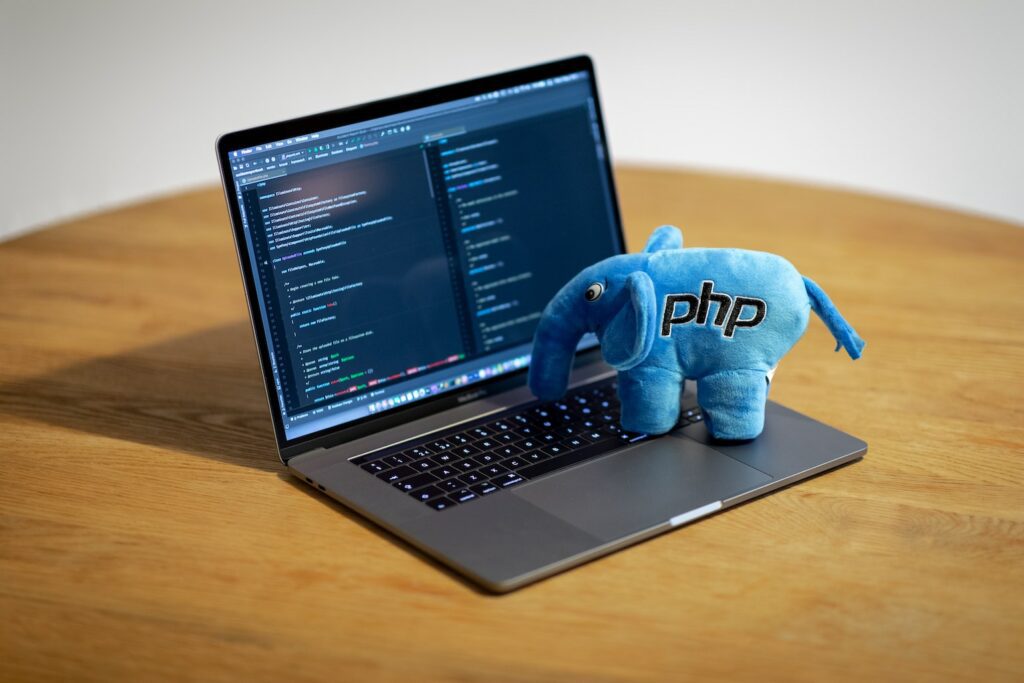Object oriented programming, also commonly referred to as OOP, is one of the most popular forms of programming.
OOP allows developers to build on previously written code and comes with other features and benefits that make it a developer favorite. What are object oriented programming languages? A few examples include Java, Python, C#, and many more.
In this post, I’ll break down what object-oriented programming is, why it’s so popular, all the important things you need to know about this programming paradigm, and the top object oriented programming languages you might want to learn.
Table of Contents
- What Is a Programming Language?
- What Is Object-Oriented Programming?
- Principles
- Pros & Cons
- Languages
- FAQs
Disclosure: I’m a proud affiliate for some of the resources mentioned in this article. If you buy a product through my links on this page, I may get a small commission for referring you. Thanks!
What Is a Programming Language?
Before jumping into what object-oriented programming is, let’s start by clarifying our terms: what exactly is a programming language in general?
👩💻 Here’s the most basic definition: a programming language is a set of rules that converts strings to various kinds of machine code output. Basically, it’s a collection of instructions given to a computer to execute.

Each programming language—such as Java, Python, JavaScript, etc—has its own set of rules, syntax, and structure.
You write code using a programming language in a text editor or IDE. This source code is then compiled into machine language that can be understood by the computer.
Start coding now
Stop waiting and start learning! Get my 10 tips on teaching yourself how to code.
☝️ Back to the table of contents
What Is Object-Oriented Programming?
Now that you know what a programming language is, what does object oriented programming mean?
Object-oriented programming (OOP) is a programming paradigm (aka a certain kind of approach to programming) that relies on classes and objects.
- Classes are like templates that assist in the creation of a software blueprint.
- Objects are data structures that contain both data (properties or attributes) and code (procedures or methods). An object is basically a specific instance of a class. It contains its own copy of each property defined in the class, and each method is executed independently on that object.
Object Oriented Programming vs. Functional Programming vs. Procedural Programming
There are other kinds of programming languages that are not object-oriented. The two main other types are functional programming and procedural programming.
- Object oriented programming vs functional programming (FP): FP creates pure functions, as opposed to concepts of shared state like OOP. It uses conditional expressions and recursion to perform computation. FP uses a fixed data structure, while OOP applies a variable one. Functional language examples include Lisp, Scala, Erlang, Haskell, and Clojure.
- Object oriented programming vs procedural programming: With procedural programming, you solve problems from the top of the code down to the bottom. Unlike OOP, it treats data and methods as two different entities. Procedural languages include BASIC, C, FORTRAN, and Pascal.
☝️ Back to the table of contents
4 Principles of Object-Oriented Programming
There are four object oriented programming principles, also sometimes known as the four “pillars” of OOP. Let’s take a look at them!
- 📦 Encapsulation: Combining data and methods together into one single unit (known as an object). It’s often used to hide the state of an object from the other objects and the developer. The purpose of this is to keep certain information safe, as it essentially restricts direct access to some components of an object.
- 🙈 Abstraction: Hides some of the complexity and unnecessary information from users to reduce programming complexity. Basically, you don’t need to understand all the stuff happening behind the scenes to write the code.
- 👪 Inheritance: Allows certain classes to be under the umbrella of other classes (parent and child class). Allows for code reuse.
- 💻 Polymorphism: Allows objects to take on different forms. Makes code more flexible.
As you gain familiarity with OOP, you’ll start to better understand the advantages of object oriented programming principles like these.
☝️ Back to the table of contents
Pros and Cons of OOP
Object oriented programming languages may not be the best option in every single case, but they can be a great choice for a wide variety of projects and use cases.

Here are some benefits of object oriented programming—and also a few drawbacks.
Benefits of object oriented programming
- Reusable & modular: You can write one function that can be used over and over again thanks to polymorphism and abstraction. Breaks down into objects and classes.
- Highly secure: Security is built-in with encapsulation. For example, other methods and classes cannot access private data by default.
- Easy to maintain code: Fix functions instead of manually fixing or changing tons of code.
- Ability to develop code concurrently: Parts of programs can be developed separately from each other, making it easier to code on large software dev teams.
- Fast development: Existing libraries of OOP objects are already available, so you don’t have to reinvent the wheel.
Cons/limitations of object oriented programming
Programming complexity: Because OOP is so scalable, it can create a ton of messy, unnecessary code.
- Can be inefficient: Tends to use more CPU than other types of programming.
- Can create slow-running programs: When compared to procedural programs especially, OOP software can run more slowly.
- Requires a lot of upfront planning: Needs a clear design and strategy before jumping into coding, because otherwise it can get messy and bloated.
☝️ Back to the table of contents
8 Object-Oriented Programming Languages
Since object oriented programming concepts really just describe a category of coding, let’s dive into more specifics. What are object oriented programming languages?
Chances are, you’ll recognize some (or even all) of the names below—even if you never knew they were object oriented programming languages!
1. Python
The #1 most popular programming language as of April 2022, Python is known for being easy to learn, yet extremely powerful.
Since it’s a general purpose language, it can be used for almost anything, making it a great first language for aspiring programmers, data scientists, robotics engineers, web developers, DevOps engineers, and more.
Want to master Python?
Then download my list of favorite Python learning resources.
2. Java
Java is the third most popular programming language as of April 2022, boasting over 9 million worldwide users.
Businesses of all shapes and sizes use Java, including behemoths like Google and Amazon. It’s highly versatile, as well as fast and simple to program.
3. C++
Developed as an extension of the C programming language, C++ basically adds object-oriented programming capabilities to C. It’s risen to become the #4 most popular programming language in the world.
It’s a general purpose language, so it can be used for coding games, software engineering, developing browsers, operating systems, applications, etc.

4. Ruby
Ruby is an object-oriented scripting language that’s especially common in web development. It’s an interpreted language like Python, rather than a compiled one like C or C++.
It can also be used for automation, command line tools, DevOps, and more. Currently, it ranks as the #15 most popular programming language.
5. C#
Also developed as an extension to C, C# is an object-oriented programming language that compiles into byte code, rather than machine code. Typically used in internal or enterprise applications, rather than commercial software. #5 most popular programming language.
6. TypeScript
A strongly typed programming language that builds on JavaScript. Not as popular as other languages, ranking as #43 in popularity. Traditionally, JavaScript is dynamically typed (like Python), but TypeScript strictly defines what a given variable can contain.
7. PHP
Popular general-purpose scripting language that is especially suited to web development. PHP is used by 77.5% of all the websites whose server-side programming language we know, and is currently the #10 most popular language.

8. Objective-C
Objective-C is a general-purpose, object-oriented programming language used to develop apps for iOS. #17 most popular language.
Other object-oriented languages include: R, Swift, Visual Basic.NET, Perl, Scala, Kotlin, and more!
☝️ Back to the table of contents
FAQs About Object-Oriented Programming
Object oriented programming concepts aren’t always the easiest to wrap your head around, so let’s finish up with a few answers to frequently asked questions.
What is object-oriented programming best for?
Because OOP allows you to break programs down into bite-sized problems that can be solved easily, it can be used for a wide variety of projects. It’s especially good for large, complex applications that need to be updated frequently, but can also be used for smaller hobby projects you build for just yourself. It’s highly versatile.
The only time you may want to use functional programming instead, for example, is if you have to perform lots of different operations on the same set of data (mathematical computations, artificial intelligence, etc).

Should I learn an object-oriented programming language?
Whether or not you should learn an object oriented language mostly depends on your goals. But learning an OOP language is often a smart move because of how popular and in-demand they are. Many of the most popular programming languages are object-oriented.
Which object-oriented programming language should I learn?
The great thing about coding is that once you learn one language, it’s often easier to learn another. So don’t put too much pressure on yourself to choose the “right” one immediately.
That said, to narrow it down, think about your career goals. For example, if you have a dream company to work at, what is their tech stack? What language is most in-demand in your area? What kinds of projects do you want to work on?
🎧 Listen to this podcast episode for more help on choosing the right programming language for you.

Whether the right language for you ends up being object oriented, functional, or procedural (or you mix and match!), check out more of our tech skills guides to point you in the right direction!

